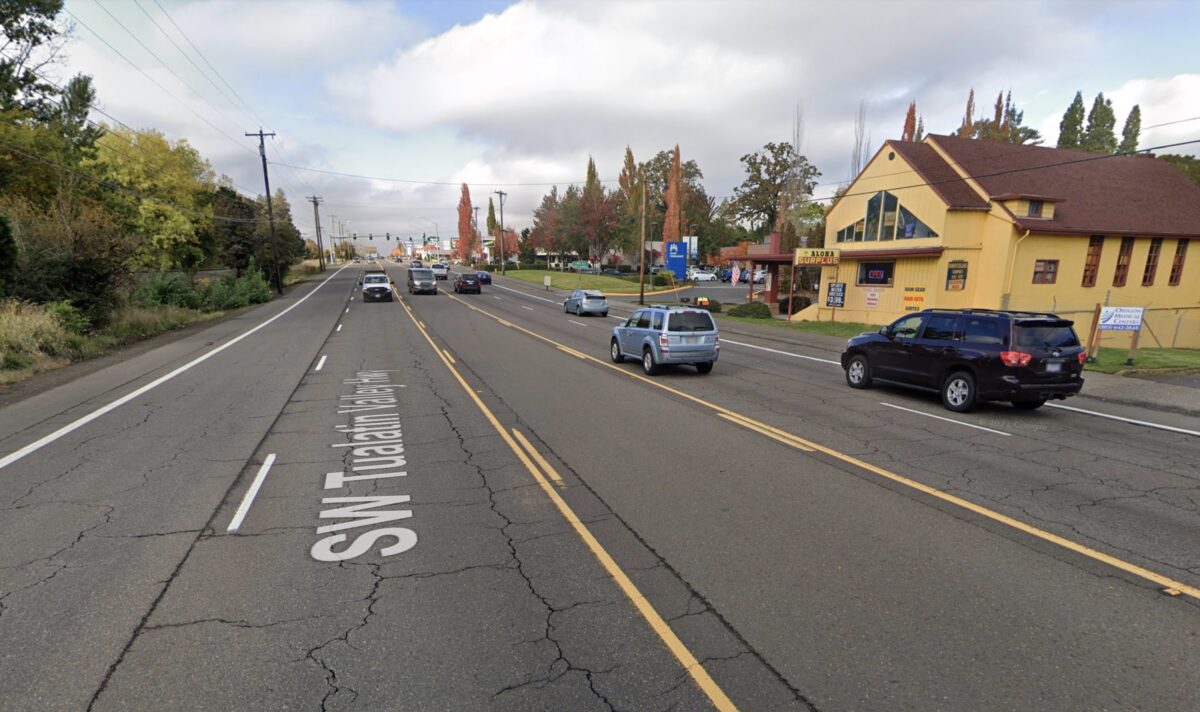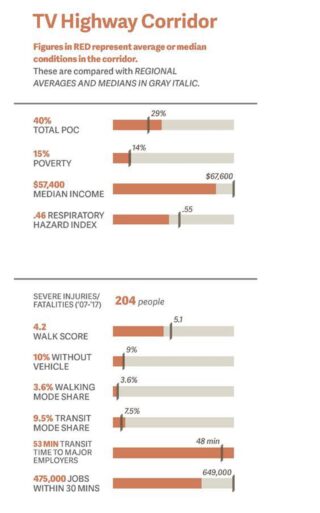
TriMet and Metro have teamed up on a $1 million project that aims to finally deliver major transit and community upgrades along Tualatin-Valley Highway, or what we’ve previously referred to as the “aorta of Washington County.”
“[Line 57] really is the backbone for tens of thousands of people that live alongside it.”
— Juan Carlos Gonzalez, Metro councilor
And the work cannot happen fast enough. We’ve reported on many deaths on TV Highway over the years. And just this week, another person was killed by a driver when they were hit while trying to cross SW 198th.
But a focus just on deaths ignores the everyday toll of an intimidating, dangerous road that holds many people hostage and prevents them from reaching not just their life and work destinations, but their own personal potential. A witness who saw Tuesday’s fatal collision told a KATU-TV reporter, “I don’t ride my bike around anymore because the traffic is so bad, and people don’t pay attention.”
Now, thanks to an $850,000 grant from the Federal Transit Administration’s Helping Obtain Prosperity for Everyone (HOPE) program, Metro and regional partners have kicked off an effort to make the road safer and more useful to more people. They will identify which type of bus rapid transit (BRT) would work best on TV-Hwy and come up with a plan to make sure future changes don’t have negative impacts on the people who currently live and travel in the area.
The grant was awarded in late 2020, but this morning, Metro’s Joint Policy Advisory Committee on Transportation (JPACT) was given its first briefing and update on the project.
“There’s a good good reason we’re focused on TV Highway,” said Metro project manager Eryn Kehe at JPACT this morning. “Because of the physical needs of the roadway itself, the transit needs in that area, and the number of people who depend on transit for their transportation.”
Advertisement

Despite relatively low density in the area, TriMet’s Line 57, which currently serves TV Highway, is the 10th busiest in the region. Of the 180,000 people who live in the area, nearly 72,000 (40%) identify as people of color. Over half of the 30,000 jobs in the area pay less than $40,000 per year and 40% of the population are well below the poverty line. The riders on this line depend on it so much, TriMet says it was one of the most resilient in terms of ridership throughout the pandemic.
“[Line 57] really is the backbone for tens of thousands of people that live alongside it,” said Metro Councilor Juan Carlos Gonzalez at the meeting. But it’s very weak backbone.
Cornelius Mayor Jeff Dalin described using transit on TV Highway as, “A slow slog.” “It’s 15 minutes from Cornelius to Hillsboro in a personal vehicle and it’s an hour on the on the bus.”
Metro plans to come up with a design concept that would make bus service faster and more appealing, a feasibility analysis of electric bus use, and a separate (but related) plan will figure out how to make sure these major investments and changes happen without displacing existing residents. Metro’s Kehe said the goal of their “equitable development strategy” is to allow people to stay in the area and benefit from the improvements that are coming. And they plan to pick up where Metro and TriMet left off on the Get Moving 2020 ballot measure concept that has already been developed for TV Highway.
Given the considerable political urgency and funding that has lined up around this project, there’s a sense that once this planning process is complete one year from now, TV Highway will be perfectly positioned to compete for a major federal grant.
What could this project hold for bikeway improvements? In 2014 The Street Trust pushed for a major protected bikeway along the corridor, so there’s some planning to start with. But since this planning grant is from the FTA, there’s not likely to be much talk of bike infrastructure. That being said, the highway currently has bike lanes and there’s plenty of width to work with, so any project that gets funded should include high-quality, physically-protected space for cycling and other micromobility vehicles.
“What really excites me about the project is the comprehensive look at the corridor and in helping it to grow up as the rest of the west side has grown up,” said Metro’s Juan Carlos Gonzalez, who has been an ardent supporter of investing in it. “And that’s transportation, that’s transit, that’s also land use, that’s economic development and supporting our small businesses. And helping it become the 21st century corridor that the West Side deserves.”
The project’s steering committee met for the first time this week and Metro says a decision on a Locally Preferred Alternative (LPA) will be ready in June 2023.

